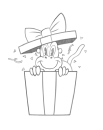$116
$145
You save $29
LESSON NOTES
An overview of value "families" and the importance of understanding them.
DOWNLOADS
value-scale.mp4
3 GB
ASSIGNMENTS
Understanding values has a lot more to do with mileage and practice rather than pure academic understanding.
Your assignment is to do the value scale and create distinct separations between each value. An understanding of these concepts are key to later lessons in the course.
